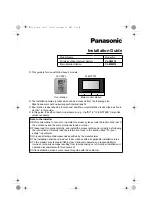
Rockwell Automation Publication 1606-RM100A-EN-P - July 2020
9
Power Supply - 24V, 5 A, 120 W, Single-phase Input Reference Manual
Output
The output provides a SELV/PELV rated voltage, which is galvanically isolated
from the input voltage.
The output is designed to supply any kind of loads, including capacitive and
inductive loads. If extreme large capacitors, such as EDLCs (electric double
layer capacitors or ‘Ultra Caps’) with a capacitance > 0.3 F are connected to the
output, the unit can charge the capacitor in an intermittent mode.
The output is electronically protected against overload, no-load, and
short-circuits. If there is a protection event, audible noise can occur.
Attribute
Value
Notes
Output voltage
Nom
24V
—
Adjustment range
Min
24…28V
Guaranteed value
Max
30.0V
This is the maximum output voltage that can occur at the clockwise end position of the
potentiometer due to tolerances. It is not a guaranteed value that can be achieved
Factory settings
Typ
24.1V
±0.2%, at full load and cold unit
Line regulation
Max
10 mV
Between 85V and 300V AC
Load regulation
Max
50 mV
Between 0 A and 6 A, static value, see
Ripple and noise voltage
Max
50 mVpp
Load > 0.2 A, Bandwidth 20 Hz to 20 MHz, 50 Ohms
Max
200 mVpp
Load < 0.2 A, Bandwidth 20 Hz to 20 MHz, 50 Ohms
Output current
Nom
6 A
(1)
—
Nom
5 A
—
Nom
3.8 A
—
Nom
5.1 A
—
Nom
4.3 A
—
Nom
3.2 A
—
Derate linearly 45…70 °C (113…158 °F)
Fuse breaking current
Typ
15 A
Up to 12 ms once every 5 seconds, see
. The fuse braking current is an enhanced
transient current that helps to trip fuses on faulty output branches. The output voltage stays
above 20V.
Overload behavior
Continuous current
For output voltage above 13V DC, see
Intermittent current
(2)
For output voltage below 13V DC, see
Overload/short-circuit current
Max
7.2 A
Typ
9 A
Intermitter current peak value for Typ 1 s.
Load impedance 50 mΩ, see
Discharge current of output capacitors is not included
Max
3.5 A
Intermitter current average value (R.M.S.) Load impedance 50 mΩ, see
Output capacitance
Typ
1800 μF
Included inside the power supply
Max
35V
The unit is resistant and does not show malfunctioning when a load feeds back voltage to the
power supply. It does not matter whether the power supply is on or off. The absorbing energy
can be calculated according to the built-in large sized output capacitor.
(1)
This current is also available for temperatures up to +70°C (+158 °F) with a duty cycle of 10% and/ or not longer than 1 minute every 10 minutes.
(2) At heavy overloads (when output voltage falls below 13V), the power supply delivers continuous output current for 1s. After this, the output is switched off for approx. 9s before a new start
attempt is automatically performed. This cycle is repeated as long as the overload exists. If the overload has been cleared, the device will operate normally. See
Figure 8 - Output Voltage Versus Output Current, Typ
Figure 9 - Dynamic Output Current Capability, Typ
Output Voltage
0
6
0
7
8
4
8
12
28V
16
20
24
10A
4
1
2
5
9
3
Adjustment
Range
Output Current
A: continuous current
B: intermittent current
A
B
Output Voltage
(dynamic behavior, < 12ms)
0
0
4
8
12
28V
16
20
24
25 A
10
5
15
20
2.5
7.5
12.5
17.5
22.5
Adjustment
Range
Output Current










































